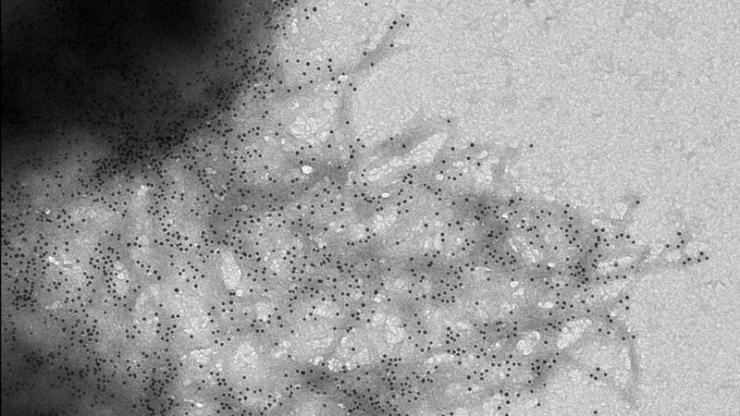
In electronics, even the most advanced computer is just a complex arrangement of simple, modular parts that control specific functions; the same integrated circuit might be found in an iPhone, or in an aircraft. Colorado State University scientists are creating this same modularity in – wait for it – plants, by designing gene “circuits” that control specific plant characteristics – color, size, resistance to drought, you name it.
The relatively new, interdisciplinary field is synthetic biology – the design of genetic circuits, just like in electronics, that control different functions and can be easily placed in one organism or the next. Most of today’s synthetic biologists work with simple microorganisms, like E. coli or yeast.
Tackling plant complexity
A CSU team led by June Medford, professor of biology, and Ashok Prasad, associate professor of chemical and biological engineering, is doing the same thing, but in the much more complex biological world of plants.
Traditional plant genetic engineering involves inserting or modifying genes that control certain characteristics. Today’s plant synthetic biologists are taking a different approach.
“We are quantitatively analyzing the gene parts so we can make predictable functions,” Medford said. Using the cell phone analogy, “Apple didn’t go and reinvent a circuit to build the new iPhone; they took an existing circuit and tweaked it,” she said. “Once you have the quantification, and the device physics of the parts characterized, you can use a computer to tell you how to put them together.”
Plants in particular pose a special problem, Prasad added. “Not only is the biology much more complicated than single-celled microorganisms, they are also slow to grow and develop. As a consequence, just testing different genetic circuits becomes a major undertaking.”
Hundreds of circuits at a time
Tackling this problem, they’ve invented a method of characterizing not one or two, but hundreds of genetic circuits at a time that control plant functions. They first had to create a blueprint for part construction – the cell parts that make up the eventual circuits. For the testing, they used protoplasts, which are plant cells whose walls have been removed, so they’re little blobs of cytoplasm.
The researchers’ new method, published in Nature Methods Nov. 16, will pave the way to develop and screen hundreds of genetic circuits, opening the door for rapid new developments in plant synthetic biology.
Protoplasts are delicate, though, so the engineers employed mathematical modeling that accounted for all the special properties of each protoplast. Carrying out intensive data analysis and simulations led them to isolate properties of single protoplasts – a major achievement.
They demonstrated their method with the plant Arabidopsis, with later validation in the food grain species Sorghum bicolor – demonstrating their technique with a commercially relevant species.
Read more: Programmable plants: Synthetic biologists pave way for making genetic circuits
The Latest on: Genetic circuits
[google_news title=”” keyword=”Genetic circuits” num_posts=”10″ blurb_length=”0″ show_thumb=”left”]
via Google News
The Latest on: Genetic circuits
- New Brain Circuit Identified in Mice That Controls Body’s Inflammatory Reactionson May 1, 2024 at 4:01 pm
Future research could identify drugs that can target this newfound brain circuit to help treat a vast range of immune disorders and diseases.
- Spinal V1 inhibitory interneuron clades differ in birthdate, projections to motoneurons and heterogeneityon May 1, 2024 at 1:04 pm
In conclusion, the results suggest that previously defined V1 clades show differences in birthdate, heterogeneity, projections to motoneurons and/or premotor networks, and collectively may represent ...
- Scientists identify new brain circuit in mice that controls body's inflammatory reactionson April 30, 2024 at 5:00 pm
"Thanks to great advances in circuit tracking and single-cell technology, we now know the brain does far more than that. It is monitoring the function of every system in the body." Future research ...
- New method rapidly reveals how protein modifications power T cellson April 29, 2024 at 12:10 pm
Imagine riding a bike. Now imagine riding a bike with an enormous beach ball stuck on your handlebars. That "modification" might change your experience quite a bit. In our cells, molecules called ...
- Judge tosses GIPA suit against Advocateon April 26, 2024 at 2:01 pm
An employee who alleges Advocate Health and Hospitals Corp. required her to answer questions about her family medical history does not have a case under the Illinois Genetic Information Privacy Act, a ...
- PTSD tied to 95 'risk hotspots' in the genomeon April 26, 2024 at 1:00 pm
In a group effort, scientists from all over the world came together to create a detailed map of the genetic causes behind PTSD.
- Fugitive’s Bid to Recover Allegedly Privileged Documents Failson April 25, 2024 at 10:48 am
A group of genetic testing companies and the now-fugitive who operated them lost their appeals to claw back thousands of allegedly privileged documents that were seized and later produced by the ...
- In a first, mice brain circuits regenerated using rat stem cellson April 25, 2024 at 8:29 am
Two independent research teams have achieved successful regeneration of mouse brain circuits by cultivating neurons from rat stem cells.
- Scientists regenerate neural pathways in mice with cells from ratson April 25, 2024 at 8:00 am
Two independent research teams have successfully regenerated mouse brain circuits in mice using neurons grown from rat stem cells. Both studies, published April 25 in the journal Cell, offer valuable ...
- A genetic patch corrects a rare syndrome in human brain organoid grafted into a raton April 24, 2024 at 9:51 am
The team led by Sergiu Pasca, from Stanford University, wants to test this promising strategy in children with Timothy Syndrome, which is associated with autism and epilepsy ...
via Bing News










